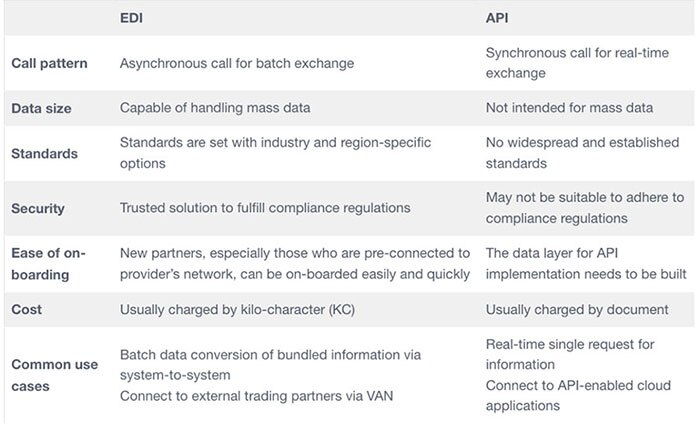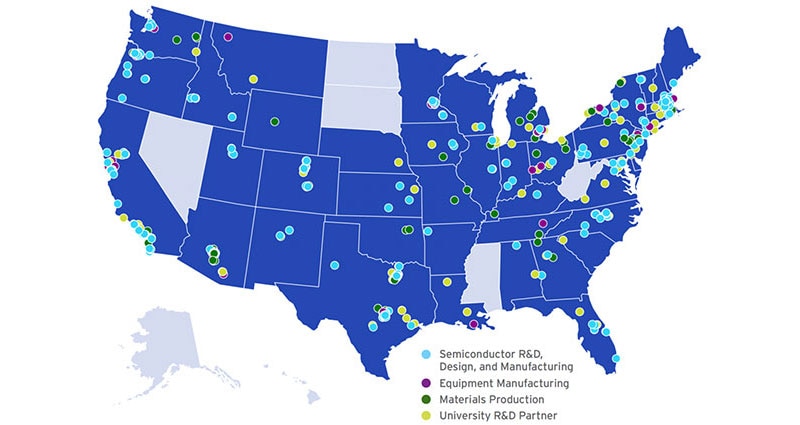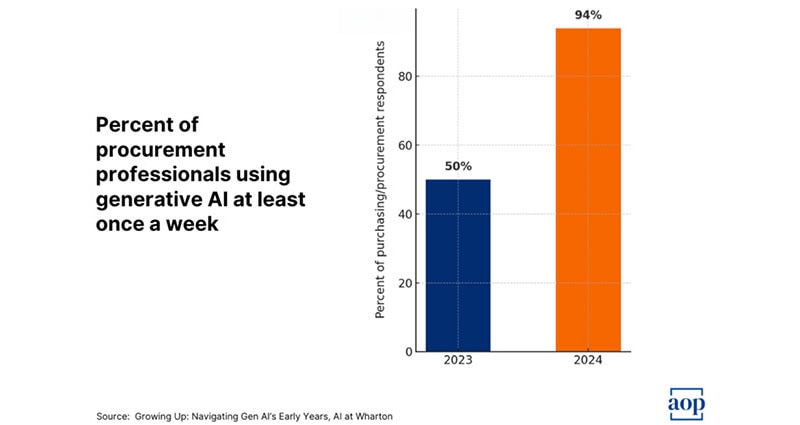EDI vs. API: Take the Best of Both for the Optimal Supply Chain
“EDI is dead!” We’ve been saying that for decades, but Electronic Data Interchange (EDI) technologies haven’t disappeared and won’t in the foreseeable future. Meanwhile, over the past decade or two, application programming interface (API) has been touted as the data exchange panacea. The reality, though, despite the insistence of the industry on an either/or solution where one standard wins, is that we are living with a both/and situation where it really depends on what you are trying to communicate and who is on the other end of the pipe.
I predict that API and EDI will continue to share the stage in terms of supply chain communications.
Defining EDI and API
Today, EDI continues to drive many global supply chain interactions. Simply put, EDI is the standard that allows the computer-to-computer exchange of business documents between trading partners. Exchanges can be achieved in minutes, although typically organizations do batch processing on a pre-defined schedule. EDI is a language that allows various supply chain systems and partners to communicate easily and create transparency. Streamlining communication provides a number of clear benefits:
- Reduced costs: By reducing performance gaps, organizations can avoid fines due to service level agreement (SLA) violations, as well as costs related to delays and performance challenges.
- Speed: Getting away from paper and automatizing processes cuts processing time and gets business done faster. For example, many organizations report cutting order-to-shipment cycles in half.
- Accuracy: Manual processes are error-prone, so less human intervention means fewer errors.
- Efficiency: Integration and automation increase speed and accuracy—leading to greater efficiency.
- Security: By limiting access to data and creating audit trails and archiving, EDI circumvents the security challenges inherent in manual processes. The system is available only to pre-defined authorized users.
API, meanwhile, comprises pieces of code that function as digital interpreters between applications and digital environments. The code functions in real-time. Rather than creating a connection between two EDI systems, this web-based protocol allows different systems to communicate with each other without human intervention. API integrates three important characteristics:
- Procedures: API implementations are programmed to execute specific tasks and functions initiated by different user commands.
- Protocols: Depending on the type of API, different protocols are used to regulate data formatting between systems.
- Tools: These functions provide the necessary components to develop software and programs.
As a general rule, API—as used in the supply chain—offers many of the same benefits as EDI while being faster and simpler. As a newer standard, APIs connect to a greater breadth of systems and are more likely to support and communicate with future technologies and adopt the latest security protocols.
 Figure 1: EDI wins the day compared with API when handling large amounts of data and security. API, meanwhile, is potentially more affordable and can handle requests quickly. (Image source: EDI Basics)
Figure 1: EDI wins the day compared with API when handling large amounts of data and security. API, meanwhile, is potentially more affordable and can handle requests quickly. (Image source: EDI Basics)
Do you need to choose?
Both EDI and API bring something to the table in terms of benefits. Neither is going to disappear. EDI is nearly ubiquitous with a market value of $24.6 billion, according to The Insight Partners.1 Over the next five years, that figure will likely almost double to reach $49.2 billion (a compound annual growth rate of 9.5%). By comparison, the API management market size was 1.8 billion in 2020 and is projected to reach $13.6 billion by 2028, a CAGR of nearly 29 percent, according to Verified Market Research.2
Increasingly, API is seen as complementary to traditional electronic data interchange strategies rather than a total replacement for EDI. A number of suppliers are offering products and services that allow both API and EDI to run together on the same platform, and most importantly, interact with each other.
EDI has a long and rich history of supporting data exchange throughout the global electronic supply chain. It is a clear front-runner for organizations with large quantities of transactions. API arose and carved out a role by addressing the increasing speed of markets and by being able to quickly evolve and scale to meet new industry demands. There’s little reason for supply chain pros to choose between one or the other, especially when using both has definite advantages.
References:
1: Insight Partners: https://www.theinsightpartners.com/pr/electronic-data-interchange-edi-market
2: https://www.verifiedmarketresearch.com/product/api-management-market/

Have questions or comments? Continue the conversation on TechForum, DigiKey's online community and technical resource.
Visit TechForum










